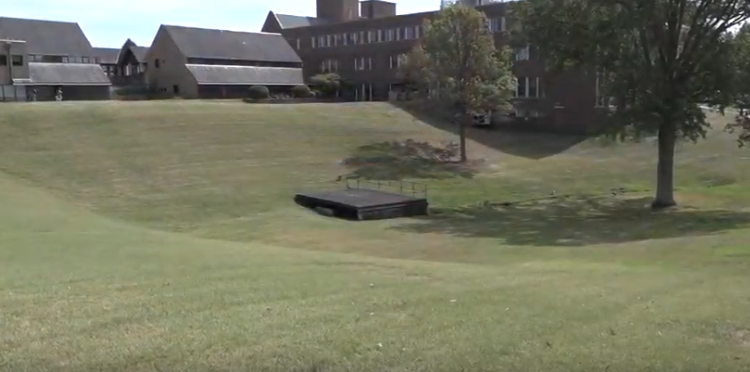By Patrick McDowell
Bellarmine University has been home to thousands of students over its lifespan, though it hasn’t always looked the same. That begs the question, what’s coming next?
When students consider or suggest improvements that can be made to campus, many of the more exciting recommendations come in the form of facilities.
“Something that I wish would’ve been incorporated before I graduated was more parking,” Bellarmine senior Kristen Crable said.
Whether students want more bathrooms or a new collegiate sports field, the Facilities Management team and the Steering Committee are the groups that consider those types of campus changes.
The Facilities Management team organizes and supervises any changes coming to campus in the form of buildings, construction, or additions and contributes toward the maintenance of existing buildings.
A Facilities Masterplan Committee, also known as the Steering Committee, decides what comes onto the campus.
Although some ideas may get rejected due to a lack of interest and/or funding, other reasons can be a bit more complicated.
Jeffery Dean, assistant vice president of facilities management and a member of the committee, spoke about some of the possible changes.
“There are a few areas of campus that have easements or restrictions,” Dean said. “For example, the area next to the amphitheater (the black stage in the green space across from UDH) is a detention basin.”
Some of the changes I posed to administration had their own difficulties. Such was the case with these suggestions:
- The placement of the next major facility should go on St. Angela’s Hill, the area to the left of the arch at the main entrance to campus. This would be a great location for a sports facility or parking lot.
- The area under UDH should be repurposed as a student game room or lounge. Its current use is simple storage space for Sodexo and the theatre department.
Both areas would require much more financial commitment and time than it would seem at first glance.
“There are several areas on campus that are being evaluated for re-purposing based on utilization. The area under UDH is limited due to accessibility issues, low ceilings and limited plumbing,” Dean said. “The campus is on a limestone rock bed which can make construction difficult and expensive.”
Although ideas come from everywhere for essentially everything, the committee is especially focused on hearing from the students and reaching out to them through surveys and similar means.
So what exactly is the Steering Committee steering us toward? Dr. Sean Ryan, senior vice president and co-chair of the Steering Committee said sports facilities are a top priority.
“With the decision to transition to D1… Immediately we will need to begin renovations to our baseball and softball facilities,” Ryan said. “Certainly we know we need to do renovations to Knights Hall as part of that agreement as well.”
After learning the ins and outs of the system, I have some realistic changes that I think should be made.
- All buildings and rooms not painted within the past 10 years should be painted in school colors. For example, Pasteur Hall needs to have several rooms repainted.
- Renovations to the floors and carpets should be made in main buildings. Large buildings such as Clayton Hall should be changed from carpet to stone or hardwood flooring.
Though these changes may not seem grandiose, they are realistic. Many times the biggest problem with ideas is they are financially unfeasible. Making changes to existing buildings is far more cost-effective because even though they are smaller investments than constructing a new facility, they make a big impact on the appearance of the university. They are essential for modernizing our campus and maintaining a competitive edge that sets us apart from other universities.
Of course, these changes will take financing only possible through an even greater amount of interest and support from the Bellarmine community.
The committee is devoted to making the decision-making process feel inclusive.
“(The Master Planning Committee) will be reaching out to all constituents. Faculty, staff, students, parents, alumni, key donors and benefactors will be important in that process,” Ryan said.
The committee will reach out directly to students, but students can get involved in much more intentional ways:
- RSOs can be a platform to request changes.
- Open forums are a great way to gain interest for an idea.
- Students can participate in surveys via the “Stuff to Do at BU” emails that will send students questions about possible changes to campus.

